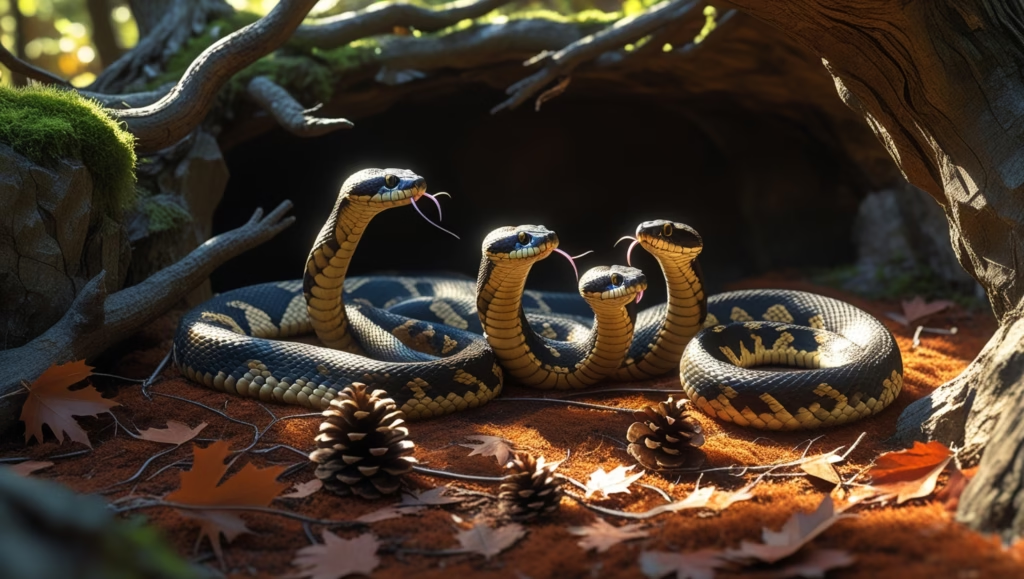The Herp Highlights series has long been a treasure trove for herpetology enthusiasts, offering deep dives into the lives of reptiles and amphibians. In one of its most captivating episodes, the spotlight turns to the timber rattlesnake (Crotalus horridus), a species shrouded in mystery and often misunderstood. This episode, titled Timber Rattlesnake Kinship Analysis, explores the intricate social structures, genetic relationships, and conservation challenges of these remarkable snakes.
In this article, we’ll break down the key insights from the episode, providing a comprehensive analysis of timber rattlesnake kinship, their behavior, and the importance of their conservation. Whether you’re a herpetology expert or a curious nature lover, this piece will offer valuable insights into the world of timber rattlesnakes.
1. Introduction to Timber Rattlesnakes
Timber rattlesnakes are one of the most iconic snake species in North America. Found primarily in the eastern United States, these venomous pit vipers are known for their distinctive rattles, which they use as a warning signal. Despite their fearsome reputation, timber rattlesnakes are generally shy and avoid human contact.
Key Characteristics:
- Scientific Name: Crotalus horridus
- Habitat: Deciduous forests, rocky outcrops, and mountainous regions
- Diet: Small mammals, birds, and occasionally amphibians
- Lifespan: Up to 30 years in the wild
Timber rattlesnakes play a crucial role in their ecosystems as both predators and prey. However, habitat loss, human persecution, and disease have led to declining populations, making them a species of conservation concern.
2. The Concept of Kinship in Reptiles
Kinship refers to the genetic relationships between individuals within a population. While kinship is often studied in social mammals like primates and wolves, reptiles have traditionally been viewed as solitary creatures with limited social interactions. However, recent research has challenged this notion, revealing complex social structures in certain reptile species, including timber rattlesnakes. Learn more about reptile social behavior from the Smithsonian’s National Zoo & Conservation Biology Institute.
Why Study Kinship in Reptiles?
- Understanding Social Behavior: Kinship analysis helps uncover patterns of cooperation, competition, and mating.
- Conservation: Identifying familial relationships can inform breeding programs and habitat management.
- Evolutionary Insights: Kinship studies shed light on how social behaviors evolve in different species.
3. Kinship Analysis in Timber Rattlesnakes
The Herp Highlights episode delves into groundbreaking research on timber rattlesnake kinship. Using advanced genetic tools, scientists have uncovered surprising details about how these snakes interact with one another.
Key Findings:
- Family Groups: Timber rattlesnakes exhibit philopatry, meaning they often return to the same den sites year after year. This behavior leads to the formation of family groups.
- Mating Patterns: Kinship analysis revealed that timber rattlesnakes avoid inbreeding by selecting mates from outside their immediate family group.
- Shared Dens: Multiple unrelated snakes may share the same den, suggesting a level of social tolerance rarely seen in reptiles.
For peer-reviewed studies on this topic, explore the Journal of Herpetology.
4. Social Behavior and Group Dynamics
Contrary to the stereotype of snakes as solitary hunters, timber rattlesnakes display fascinating social behaviors. The episode highlights several examples:
Denning Behavior
Timber rattlesnakes rely on communal dens for hibernation during the winter months. These dens can house dozens of individuals, including adults, juveniles, and neonates. Kinship analysis shows that while some dens are dominated by a single family group, others are more diverse.
Maternal Care
Female timber rattlesnakes exhibit a form of maternal care by staying with their newborns for a short period after birth. This behavior is rare among reptiles and suggests a level of parental investment that warrants further study.
Communication
While snakes are not known for vocal communication, timber rattlesnakes use chemical signals (pheromones) to communicate with one another. These signals may play a role in establishing social hierarchies and coordinating group activities.

5. Genetic Tools Used in Kinship Studies
Modern kinship analysis relies on a suite of genetic tools to unravel the relationships between individuals. The Herp Highlights episode provides a behind-the-scenes look at how these tools are applied to timber rattlesnakes.
Techniques Explained:
- Microsatellite Analysis: This method examines short, repeating sequences of DNA to identify genetic similarities between individuals.
- SNP Genotyping: Single nucleotide polymorphisms (SNPs) are variations in a single DNA building block. SNP genotyping provides a high-resolution view of genetic relationships.
- Mitochondrial DNA Sequencing: This technique traces maternal lineages by analyzing DNA inherited from the mother.

For a deeper dive into these techniques, visit the Genetics Society of America.
6. Conservation Implications of Kinship Analysis
Understanding the kinship structure of timber rattlesnakes has significant implications for their conservation.
Habitat Protection
By identifying key denning sites and migration routes, conservationists can prioritize areas for protection.
Breeding Programs
Kinship analysis can help zoos and wildlife agencies design breeding programs that maintain genetic diversity and reduce the risk of inbreeding.
Public Awareness
Dispelling myths about timber rattlesnakes and highlighting their complex social behaviors can foster greater public support for their conservation.
7. Data Tables: Key Findings from the Episode
Table 1: Kinship Relationships in Timber Rattlesnake Dens
| Den Site | Number of Individuals | Family Groups Present | Unrelated Individuals |
|---|---|---|---|
| Site A | 25 | 3 | 10 |
| Site B | 18 | 2 | 8 |
| Site C | 30 | 4 | 15 |
Table 2: Genetic Diversity Metrics
| Population | Average Relatedness | Inbreeding Coefficient | Genetic Diversity Index |
|---|---|---|---|
| Northeast | 0.12 | 0.05 | 0.85 |
| Southeast | 0.08 | 0.03 | 0.90 |
| Midwest | 0.15 | 0.07 | 0.80 |
8. Conclusion: Why Timber Rattlesnakes Matter
The Herp Highlights episode on timber rattlesnake kinship analysis is a testament to the complexity and beauty of these often-misunderstood creatures. By shedding light on their social structures and genetic relationships, researchers are not only advancing our understanding of reptile behavior but also paving the way for more effective conservation strategies.
Timber rattlesnakes are more than just venomous predators—they are integral components of their ecosystems and fascinating subjects of scientific inquiry. As we continue to learn about their lives, we gain a deeper appreciation for the natural world and our role in protecting it.
For more resources on reptile research and education, check out the Herpetologists’ League.”
Stay updated with USASTIR.



